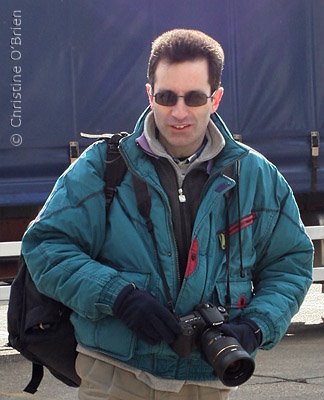
You decide to go out and buy a tripod. You have money in your hot little hand. You know that to get sharp shots you need a tripod capable of holding steady the most demanding camera and lens combination in your bag (normally the camera with the lens on that overhangs most). Let's say that you are prepared to lug around a substantial weight in order to get those sharp shots. You buy a well made all metal or metal and carbon fibre tripod at significant expense. But are you sure you really needed to?
Here's a thought. Many photographers who have bought lenses in the last few years will have several with image stabilisation (IS). Later model image stabilisation is tripod detecting, and can be left active while on a tripod (don't try this with the earlier type IS). In fact, with that in mind is it possible that the role of the tripod could have changed? If the tripod should happen to have a degree of flexibility, would the IS cut in and compensate?
What I am suggesting is this. If all but your very widest lenses have the later version of IS (or if it exists within the camera body as it does with some makes) the role of the tripod changes from something that should hold the camera and lens completely still, to a device to restrict the movement of the camera and lens to limits within which the IS can compensate for any remaining movement. In that situation you may be able to produce sharp shots with the aid of a tripod that is not capable of keeping the camera fully still in all conditions.
Now I think it is very important to clarify that I am not suggeting that this is the ideal situation, or that you should trade in your lovely beefy three-legger for a lesser model. My point is that maybe you can now take a smaller lighter tripod with you where before you would not have been prepared to carry a more solid (and heavy) one. All the other precautions of weighting the tripod, using mirror lockup and self timer/remote release still apply of course.
The tripod that I have been using in just these situations is one from the Benro Travel Angel range, and my comparison tests have shown that with all but very long exposures of several seconds the combination of light tripod and IS gets the results. Do your own tests to see what works for you.
Image: Overlooking Turkdean on the edge of the Chiltern Hills



